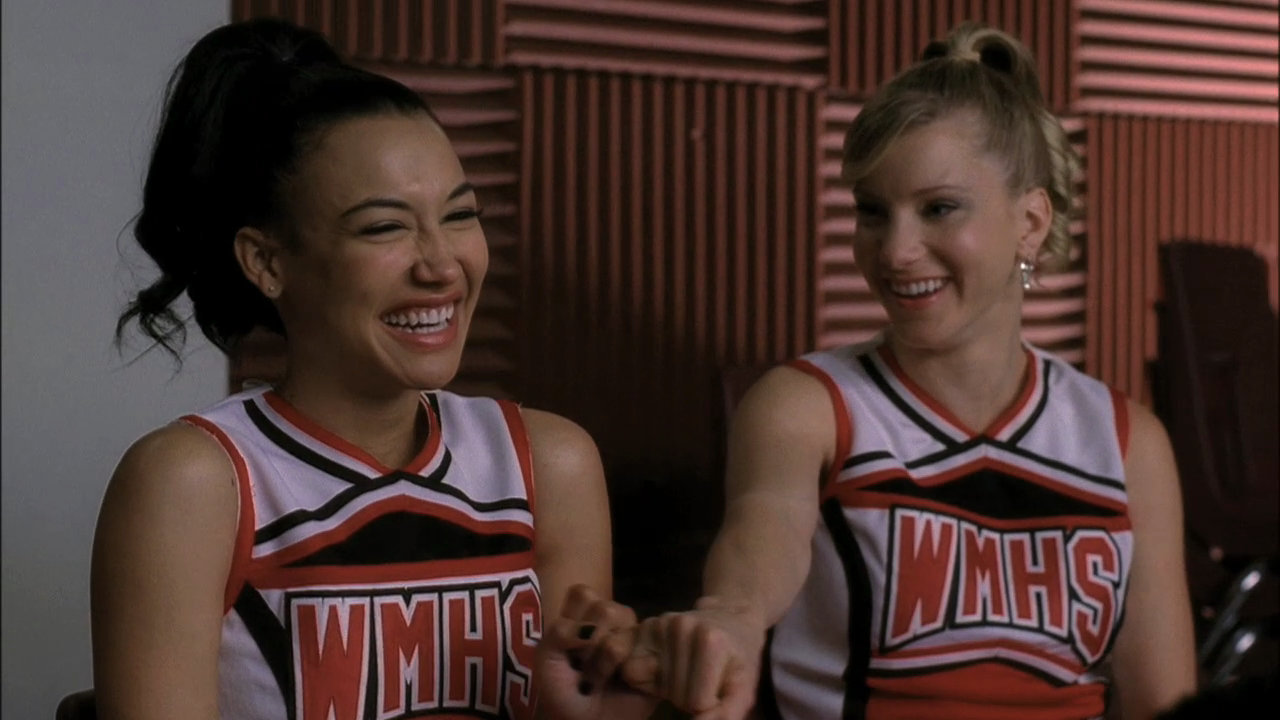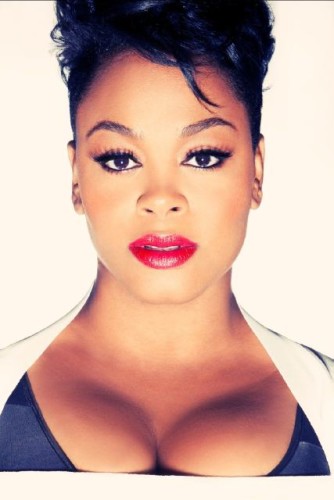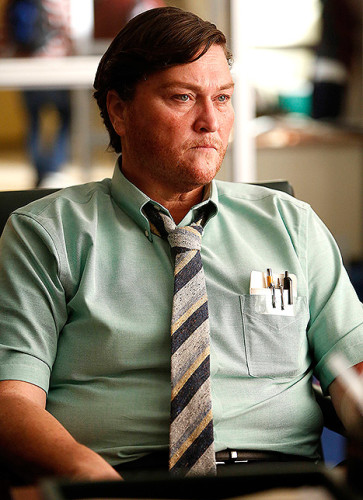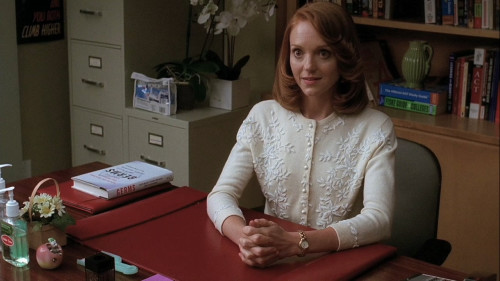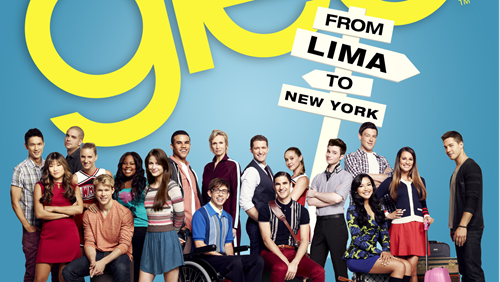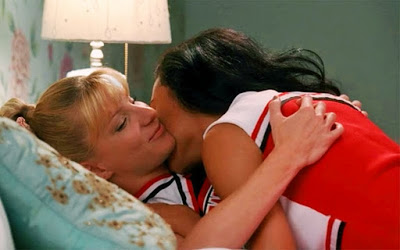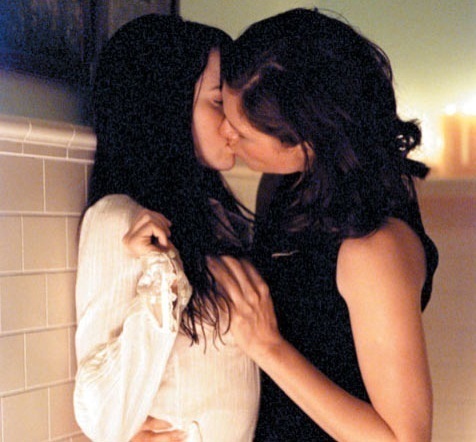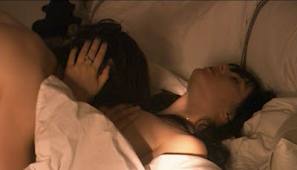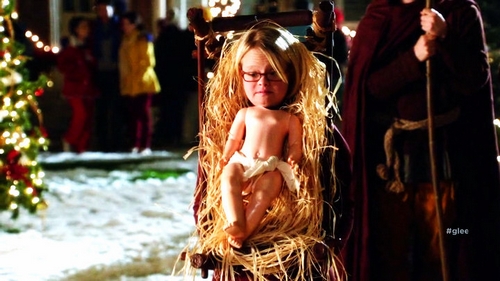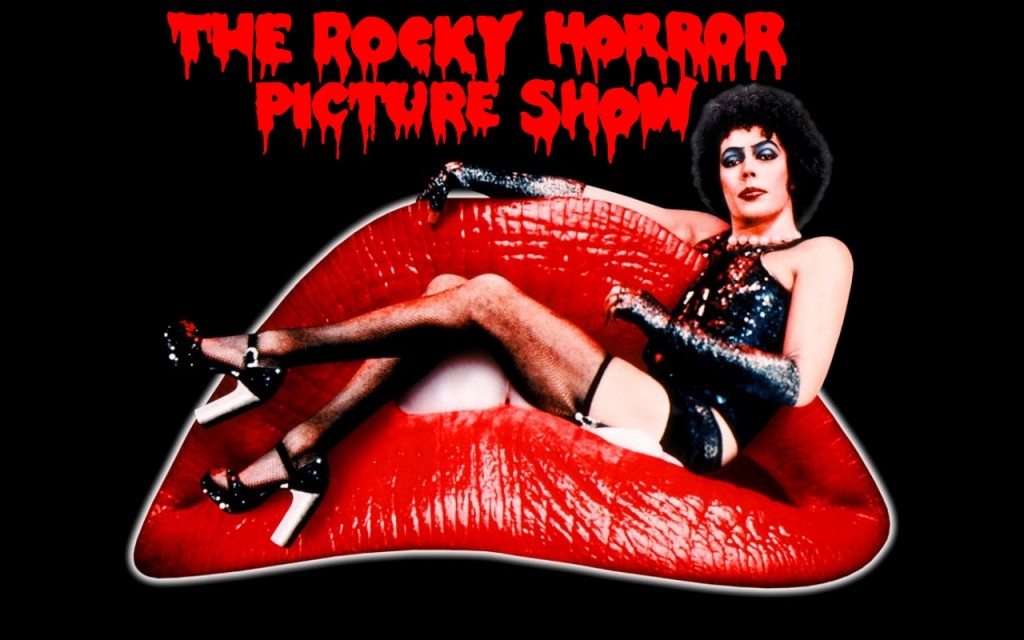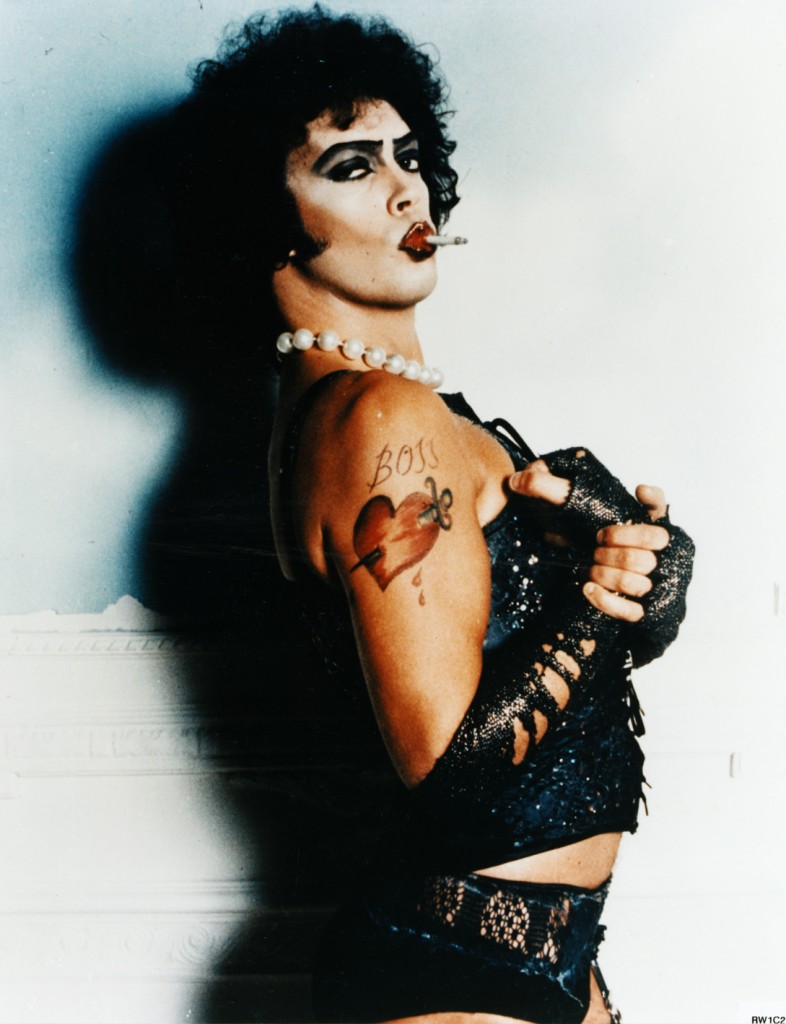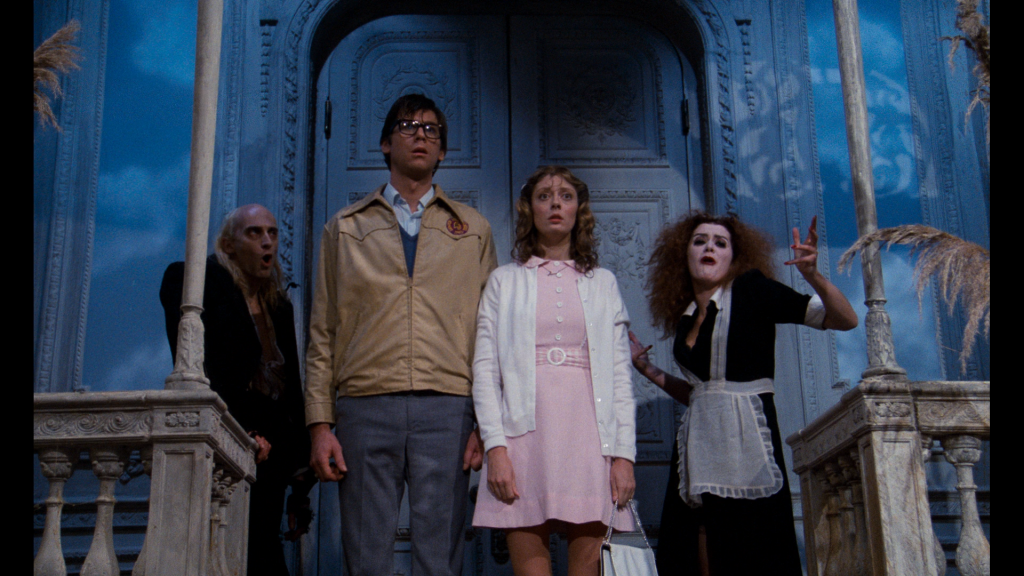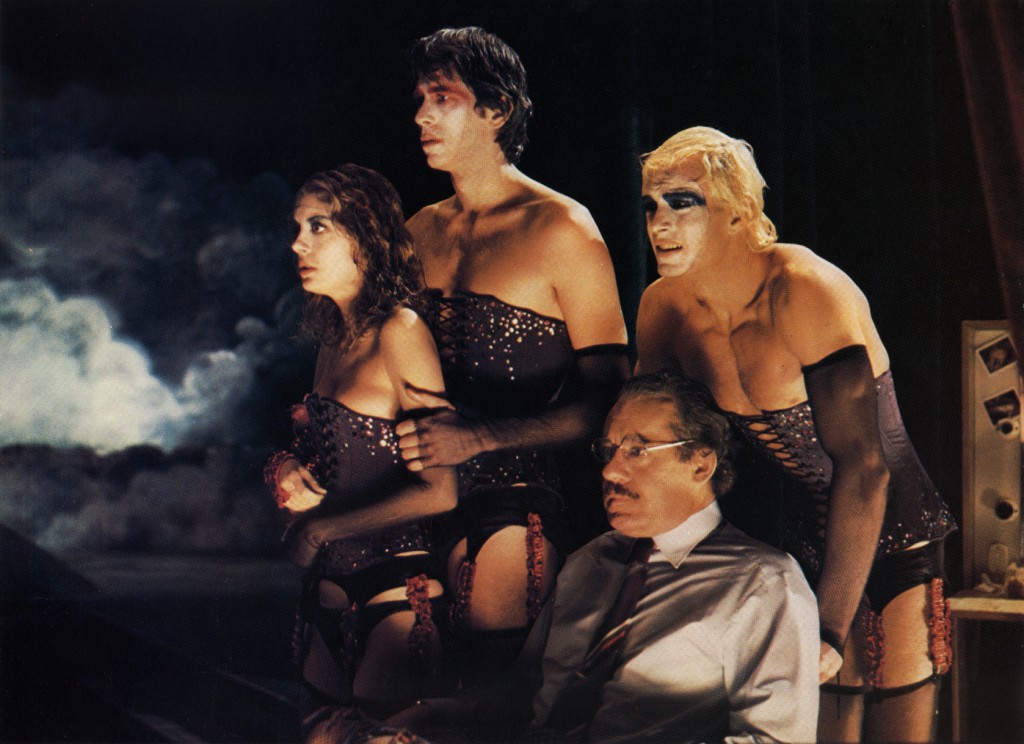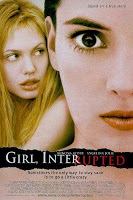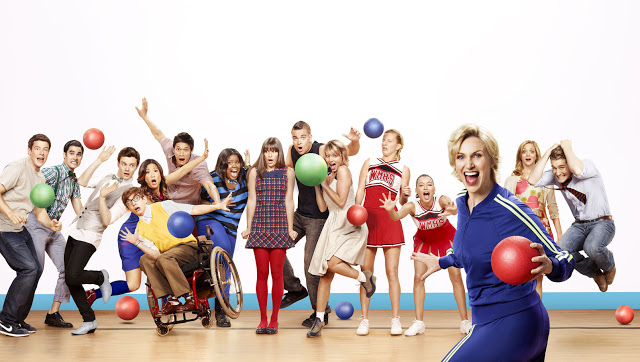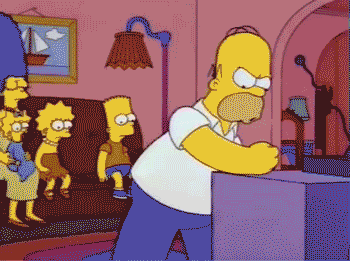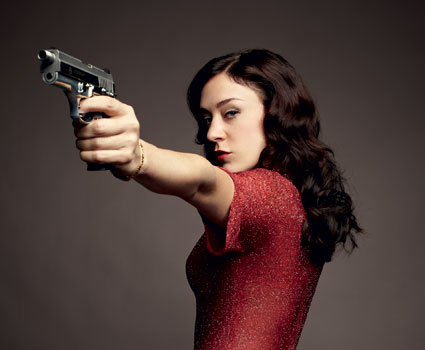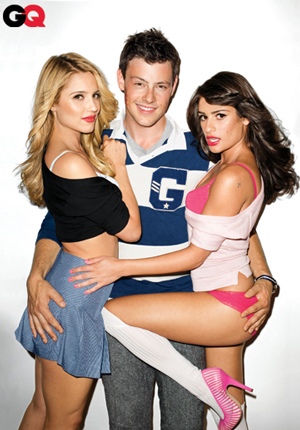
This guest post written by Shira Feder appears as part of our theme week on Bisexual Representation.
“Sex is not dating,” Santana Lopez (Naya Rivera), the outspoken Latina cheerleader, announces. It is season one, episode thirteen of Glee, the newest hit teen show to grace America’s television sets, and millions of people are watching.
“If it were, Santana and I would be dating,” parries Brittany S. Pierce (Heather Morris). An unquantifiable number of interested audiences lean forward, crane their heads. Did she really just say that? Yes, Brittany did, and thus the romance between goofy, purportedly bisexual Brittany Pierce and self-proclaimed “bitch” with a heart of gold, Latina lesbian Santana Lopez would go on to catalyze some of Glee’s highest highs and lowest lows.
TV isn’t created in a vacuum. Today more than ever, fan influence has planted itself inside the writers room. Brittany’s throwaway joke inspired interested fans in what was potentially Glee’s first Sapphic coupling. Fans rallied themselves in endorsement of the couple, but had to wait until season two, episode four, to see any intimacy between the two, presented in the form of neck nuzzling because on-camera kissing may have been “too scandalous” for a family show.
“Bisexual’s a term that gay guys in high school use when they wanna hold hands with girls and feel like a normal person for a change,” Kurt tells the undecided Blaine in season two, episode fourteen. While Kurt’s comment could have been further explored, it’s not; it’s a stance of bi erasure, and one that remains firmly in place amongst the series’ ideologies, right between “The show must go on!” and “80% of screen time is reserved for heterosexual couples.”
Brittany’s sexuality, while never explicitly stated by the character as bisexual, goes unconcealed for the most part because the Glee audience is led to believe that she doesn’t have much agency over her own personal life. The folks behind Glee, Ryan Murphy and company, have never known quite what to do with Brittany. Her character fluctuates from being an infantilized teen who believes in magic combs and allows Santana to manipulate her into sex — which reinforces rape culture and plays into the ugly underpinnings of stereotypes, all of them involving the myth of the voracious lesbian who preys on innocent straight girls — to a Mensa-accepted mathematical genius. The implication that Brittany is flighty or vapid thus “excuses” her bisexuality by the show’s terms because she is not fully aware of what she is doing, bouncing from one person to the next. Various writers and critics have even questioned her ability to even consent to sex after exhibiting such childlike tendencies. So, the only known bisexual character on Glee is not exactly drowning in self-awareness, making this already lukewarm support of bisexuality even less encouraging than it could (or should) be. Then again, this is Glee; if you’re not insulted by something the series does, you aren’t paying attention.
In season four, episode nine, Brittany tells Sam she cannot date him because she is worried the lesbians of the nation will harass him:
“It’s like, all the lesbians of the nation, and I don’t know how they found out about Santana and I dating, but once they did, they started sending me, like, tweets and Facebook messages on Lord Tubbington’s wall. I think it means a lot to them to see two super hot, popular girls in love, and I worry if they find out about you and I dating that they’ll turn on you and get really violent and hurt your beautiful face and mouth.”
In trying to prevent fan backlash by acknowledging it, the writers instead managed to alienate a diverse fanbase, by refusing to even mention bisexuality. The preemptive assumption in these lines, that Brittany and Santana’s relationship is only for the “lesbians of the nation,” thereby excluding any other sexualities, ignores the variety of different “Brittana” fans who exist that might have been proud to see a fellow bisexual person on-screen. The writers should’ve known better than to alienate their fanbase by defensively accusing them of caring too much, immediately followed by the threat of violence. Brittany’s confusing response, where she doesn’t mention her own sexual orientation and instead speaks in vague terms about lesbians, presents Glee’s lack of clarity on sexual fluidity.
The other narrow-minded conjecture here is that lesbians in the audience will be actively upset that Brittany is not dating another girl because of the television fallacy that bisexual people “become straight” when they are dating someone of the opposite gender. The so called “lesbians of the nation” were not angry about Sam; they were concerned about the possibility of Glee reinventing Brittany’s character as someone who experimented in high school, as character continuity was never Glee’s strong suit. They’re angry about being insulted in a tossed off meta-reference reducing their valid emotions and opinions about representation into a punchline. There is definitely an interesting argument to make against fan entitlement, but it doesn’t belong here.
The lesbian anger that erupted because of Brittany’s line seemed to be less about Brit moving on with Sam and more about the fact that their new relationship was given more airtime than Brittany and Santana’s relationship ever was. Brittany being with Sam doesn’t dilute her bisexuality, yet by the narrow binary Glee created, it does. “But she was bi!” protests Sam about Brittany in this same episode, as though being bisexual precludes him from ever being able to think of Brittany romantically. When Brittany finally decides Sam is too hilarious to let go, Brittany tells a worried Sam that the lesbian blogger community is “not gonna like it, but the way I figure is that, they know they’re my sisters, and love is love.”
Using the phrase “love is love” is a pretty interesting word choice here, considering that exact phrase was used as a campaign tool during the marriage equality fight to legalize same-sex marriages in the U.S. The phrase was used to appeal to the straight majority of Americans by showing them how “normal” LGBTQ people are, that queer people are capable of love and monogamy just like straight people and they wanted access to the same rights as everyone else. Using this queer-coded terminology here, after railing against the lesbian blogger community, is an odd choice to defend a relationship that passes as heterosexual.
In season five, episode two, long after the couple has broken up, Santana says about her new lesbian girlfriend:
“Isn’t it amazing how life seems so easy when you just don’t give a fart? I mean, look at this: Hummel is getting married, Berry is just full of confidence, and I finally have a girlfriend who I don’t have to worry about straying for penis.”
Now, this is Brittany who Santana is referencing. This is the girl who worshiped and protected Santana, who took awhile to even think about another person after Santana broke up with her. This biphobic line furthers the trope of the promiscuous bisexual. Santana says this in front of people who knew her and Brittany in high school and were aware of how sacred Brittany saw their relationship. Santana’s “hilarious” zinger goes unchallenged, even though it flies in the face of every minute of character development we’ve previously seen from both Brittany and Santana, painting Brittany as sexually rapacious and Santana as the self righteous, biphobic lesbian. Sure, Glee might be one of the only shows on television to use the word bisexual to describe a character, but all the biphobia it exhibits sort of nullifies that progress.
It wasn’t just the show’s writing that confused viewers; its personal politics were often drawn into question as well. The actors involved ventured into perilous territory when discussing the two girls. Chris Colfer, who played Kurt Hummel, said in an AfterEllen interview: “Maybe Brittany and Santana are just so sexual they don’t know how to have a relationship with anyone that isn’t sexual.” This is an unfortunate statement that pushes the damaging stereotype of the predatory, promiscuous bisexual.
When asked in an interview with The Advocate about the possibility of an on-screen kiss between the girls, Heather Morris said, “I don’t think so. I asked Ryan [Murphy] about that and he said there was no way. He said that since we’re a prime-time television show, he didn’t want to do that.” Brittany had already been filmed kissing a member of the opposite sex. The abundance of screen time Brittany was given when in a heterosexually passing relationship (with Sam and Artie) only complicates the fraught relationship Glee has with representation, walking a fine line between being a “family-friendly show” (as if somehow LGBTQ characters and their relationships aren’t family-friendly) and a television series that is a safe haven for the misunderstood and marginalized.
In season six of Glee, Brittany and Santana reunite. They get their own happily ever after episode, complete with two wedding dresses and talks of forever. They shared more on-screen kisses in season six than any other season, which perhaps has something to do with the fact that this is the disgraced Glee’s final swan song, in a last ditch attempt to cement its legacy as an LGBTQ-friendly prime-time television show. Brittany seems to have forgotten she ever dated Sam, which can be generously viewed as Brittany wanting to commit to her future without thinking of the past, rather than the writers again not knowing how to handle Brittany’s sexual orientation.
Amid the murky mire of Glee’s personal politics, a path to a blissful conclusion has been carved out for the fan favorites. “The world seemed so scary and confusing. It was just too fast. It made me feel dumb, just because my brain worked differently,” says Brittany in her vows. “I would’ve suffered it all just for the tiny chance to be standing up here marrying you.” Next to her, Santana beams. Bisexuality is irrelevant when there is monogamy to think about. While it’s great to see a happy ending for two queer women characters (one a woman of color), it’s frustrating it occurred amidst bi erasure and biphobia.
See also at Bitch Flicks:
Queer Women as Sexual Beings: The L Word and More
Glee and Trans Men
Becky, Adelaide, and Nan: Women with Down Syndrome on Glee and American Horror Story
Glee‘s Not So Gleeful Representation of Women with Disabilities
Women and Gender in Musicals Week: Glee
Recommended Reading:
The Most Random Fandom | A well curated blog with brilliant analysis of Brittany and Santana that handles each Glee episode individually.
13 TV Shows with Lesbian and Bisexual Female Characters Who Are Getting It Right via Autostraddle
Shira Feder is a writer from New York who can be found at http://shirafeder.tumblr.com/ if she ever figures out how to use it.
